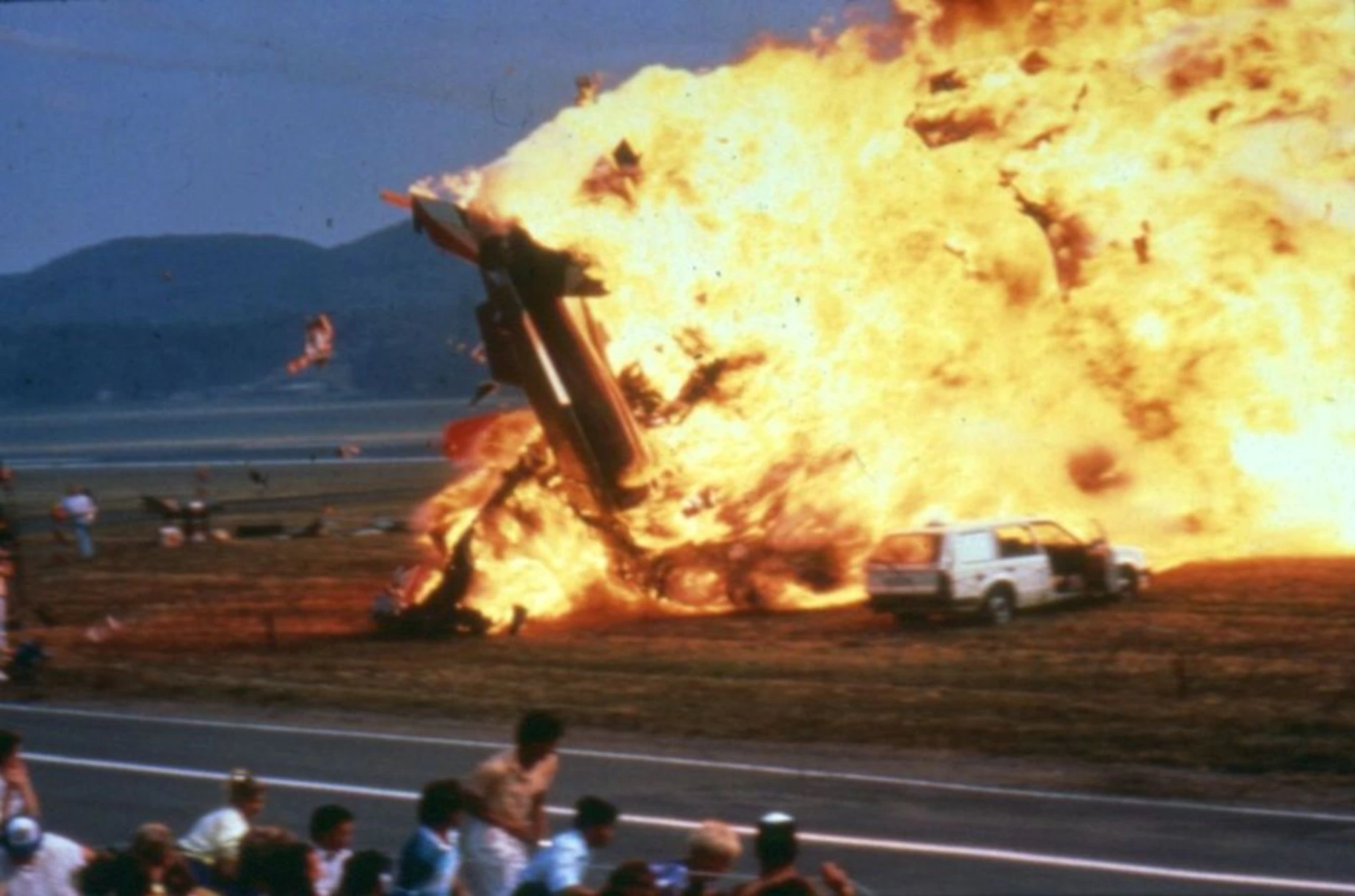The Flugtag ’88 airshow, held at Ramstein Air Base near Kaiserslautern, West Germany, on August 28, 1988, attracted over 300,000 people. However, what was supposed to be a fun-filled family day turned into one of the deadliest air show disasters ever witnessed.
What Happened?
At just after 15;30, ten jets from Italy’s military acrobatic flight team soared over the crowds below. The display had been fantastic, but things would take a dark turn following the final stunt of the act.
The “pierced heart” is maneuver that entails two clusters of planes creating a massive heart-shaped formation, with a single jet zooming through the lower tip of the heart upon concluding the trick. Lt. Col. Ivo Nutarelli, a veteran who had executed the trick on 70 occasions, was the pilot assigned to fly the single aircraft responsible for piercing the heart formation.

Due to the tight aerial acrobatics involved, there is no room for error, but unfortunately, on this occasion, Nutarelli completely mistimed the stunt. He realized that he was flying too fast, prompting him to take action to reduce his descent velocity. Despite his efforts, a collision was inevitable.
Nutarelli’s plane collided with Capt. Giorgio Alessio’s Pony 2 aircraft, leading to its mid-air explosion. Nutarelli’s plane then clipped Pony 1, resulting in the destruction of its tail portion, and sent it spiraling out of control in flames.

As Nutarelli’s plane careened towards the ground, it crashed into a grassy area located just in front of the audience, resulting in 300 gallons of flaming jet fuel being propelled into the crowd.
The Casualties
The disaster resulted in the fatalities of all three pilots involved. 31 individuals tragically lost their lives immediately at the scene, while an additional 36 individuals succumbed to their injuries in the following weeks, primarily due to severe burn trauma. Nearly 500 individuals also required medical attention as a result of the incident.

Insufficiently Prepared
Even though Ramstein was a prominent Air Force base, the authorities were ill-equipped to handle a disaster of this magnitude. Badly injured casualties were being transported to hospitals by any means possible. Furthermore, the only medical evacuation helicopter present had been destroyed in the crash.

The emergency response teams were also inundated with phone calls, causing local phone lines to become overloaded and non-functional, making relaying important information very difficult.

